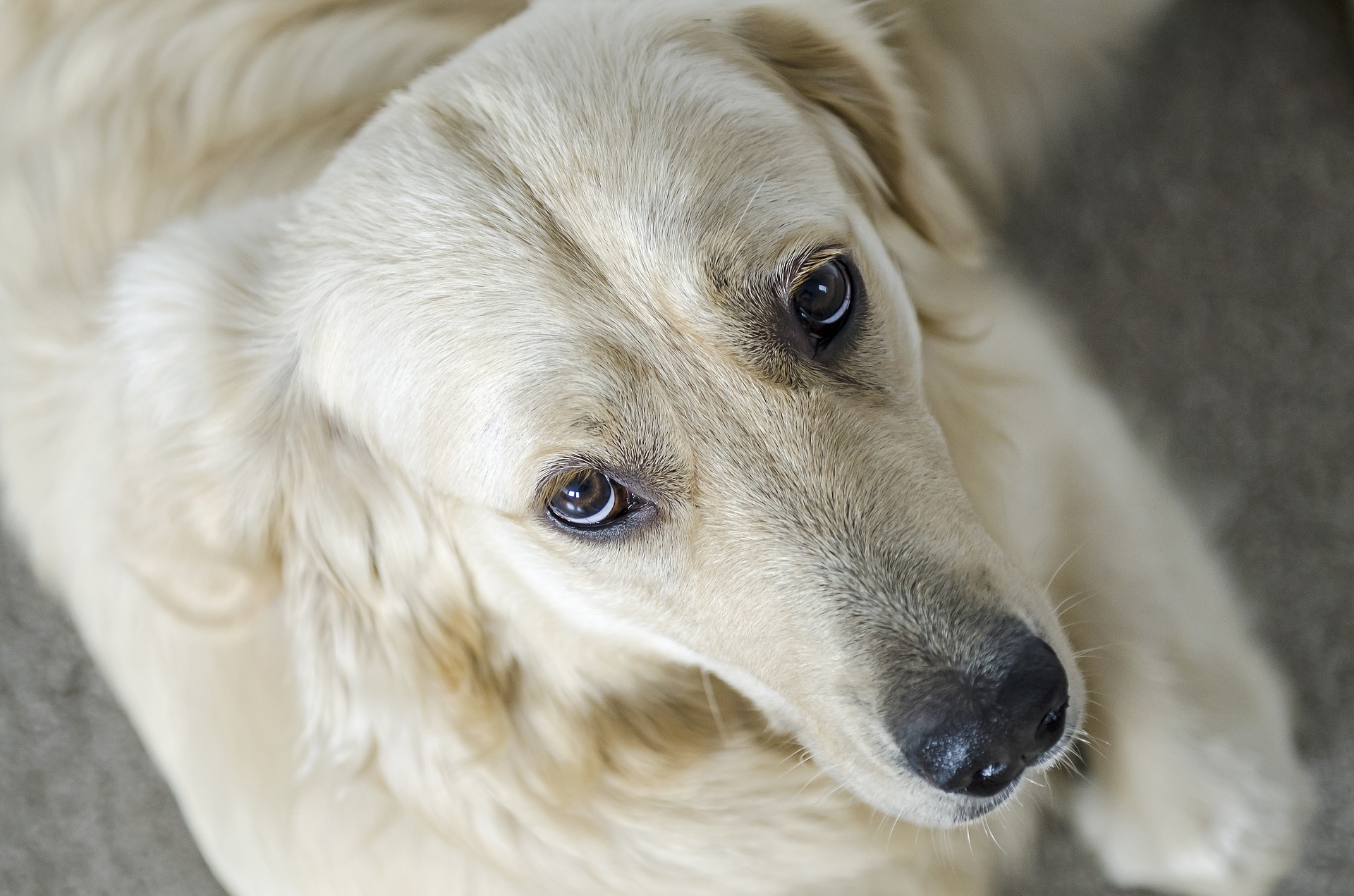Why should I check for dog eye problems?
As has been discussed in the Home Health Checks Overview, getting into the habit of regularly looking at and assessing your pet will help you pick up any dog eye problems early on and get treatment if needed as soon as possible.
What causes dog eye problems?
Eyes are often the first thing plunged into the hedgerow and take the brunt of the wind as they stick their head out the window, so naturally pick up a lot of problems. When caught early, most issues can be easily treated but if allowed to progress can become very nasty. Checking regularly and knowing what is normal is vital to catching these problems early.

How do I check for dog eye problems?
Dogs aren’t generally keen in having someone staring at them as it can be taken as a form of aggression. However, it is possible to pick up quite a lot of symptoms’ of problems without staring at them directly. There are 2 stages of examining eyes – far off and then close up.
1. Start by trying to observe your pet from a distance when they are relaxed
- Are both their eyes equally open (or closed), do they seem to be squinting?
- Can you see any discharge? What colour is it?
- Do they seem to be rubbing at their eyes at all?
- Do the eyes seem to ‘bulge’ more than they used to?
2. Once you have had a look from a distance you may have a clue as to where there may be a problem so this can speed things up when you’re closer. If you grab hold of your dog to look into his eyes then they will probably get quite upset. Often, the easiest way to have a good look is bribery and corruption. You want to get their attention somehow – often the easiest way is with a favourite treat held up in front of them. N.B. – never hold this near your face as your pet may lunge after the treat and accidently nip you. This will cause them to stare at the toy and give you time to get a good closer look at their eyes without them realising what you’re doing.
At this distance, you want to try and see if you can see any specific problem.
- Do the whites look white?
- Is any discharge clear or snotty?
- Can you see any signs of a foreign object in or near the eye?
- Does there appear to be any scratches on the eye itself?
- Are there signs of discolouration or cloudiness in the eyes?
It is worth starting to do these checks for the first time after you’ve just had a vet check as there may be certain things specific to your pet. If you know they’ve been checked and are ok you can used this as a baseline.
Our veterinary team have created a handy video to help you through the process of checking your dogs eyes, click here to watch it
Explain to your vet that you are keen to start doing your own basic health checks so you can keep an eye on him between visits to the vet. You may well find they will show you any unusual things with your pet so you know what is already there. You are not trying to replace your vet by doing things at home but because you want to know the minute anything changes so you can get them treated.
How do I get my dog to let me check for dog eye problems?
Some dogs, especially the very food motivated ones, can be tempted to eat their pills in some form of treats. There are now special, strongly flavoured, ‘doughy’ treats on the market specifically to allow you to pop the pill in the treat and then into your dog. Homemade versions should generally be a bit ‘sticky’ so that they cling to the tablet and mask the flavor well, things such as butter, cucumber or lumps of ham are commonly used tactics. It is best to start out with a few empty treats before you load them up.
What signs of dog eye problems should I look out for?
Anything that is changing. Many animals will develop lumps and bumps as they age and knowing about them and what they are doing is important in assessing how significant they are. In general, with lumps, you should consider the following questions:
- Is it growing quickly?
- Is it painful?
- Is it bleeding?
- Does it seem to be changing?
- Is it irregular in its feel – hard, knobbly etc?
- Is it causing problems because of its size?
- Does it seem to be attached to the body, deeper tissues (i.e. not freely moveable with the skin)?
If the answer to any of these questions is yes, then seek a veterinary opinion sooner rather than later. If no, then try and get an idea of what it’s doing so you can give your vet an idea of what has happened over a couple of weeks.
With weight loss or body changes then these might be an indication that things are not quite right and worth bringing to the attention of your vet. Our short video will give you some handy tips on how to assess your dogs weight and body quickly and easily at home.
Areas of moistness in the skin might be symptoms of skin infection.
Coat changes may indicate underlying problems and again worth bringing to the attention of your vet.
These checks are not meant to replace going to the vet but to help you identify what is normal for your pet and when things are changing and may require more attention.

